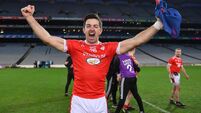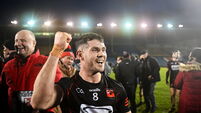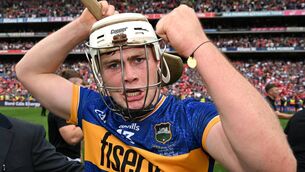Denis Coughlan: Why Glen Rovers were relegated and why they can bounce back
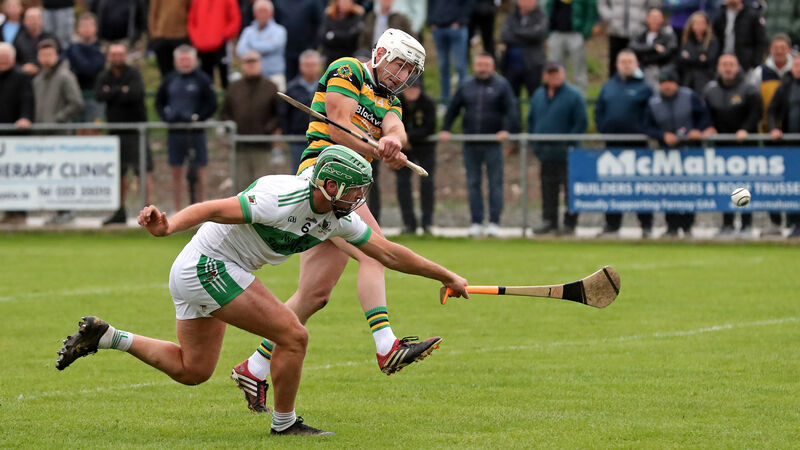
GOING OUT SWINGING: Darren Browne, Kanturk tries to block Glen talisman Patrick Horgan at Fermoy, Co Cork. Picture: Jim Coughlan.
At the 2022 Glen Rovers AGM last December, Denis Coughlan raised the subject of Na Piarsaigh’s relegation and how they shouldn’t be at all happy to see their neighbours fall from Cork hurling’s top tier.
Na Piarsaigh’s relegation seemed a strange topic to raise at a Glen Rovers AGM. They are, after all, fierce rivals.
Coughlan raised it because he felt Na Piarsaigh’s slide offered further evidence of the struggles faced by clubs on the northside of Cork city.
Fast forward to the weekend just gone and the Glen’s three-point defeat to Kanturk meant back-to-back relegation for northside clubs.
Unbroken top-tier involvement of 65 and 97 years respectively unceremoniously ended within 12 months.
Na Piarsaigh reached a senior semi-final in 2017 and the quarters in 2020, while Glen Rovers were three-in-a-row county finalists from 2019-21. That both will begin 2024 in Cork hurling’s second tier is near unthinkable.
Further down the hurling ladder, northside representation in the various county championships is scant and scarce. Mayfield are next in the fourth tier Intermediate A, of which they have reached this season’s semis. Also in the semis, of the fifth tier Premier Junior, is the Glen's second team.
But that’s it. Only three northside clubs and four teams across the 60 from Premier Senior right the way down to Premier Junior.
It was oh so different in Coughlan’s day. The All-Ireland dual winner harks back to the 1960s and '70s when both the Cork senior hurling and football championship were nicely populated with northside entities.
Na Piarsaigh was a dual senior club, as were Coughlan's own Glen Rovers/St Nick’s. St Vincent’s played senior hurling until 1975, while far more recently, Delaneys had a four-year senior stay in the mid-noughties.
The current picture is much bleaker. In the 12-team Premier Senior championships, there is not a single northside representative in either code.
Ahead of their relegation playoff defeat to Charleville this time last year, Na Piarsaigh manager Frank Nodwell spoke of dwindling playing numbers, brought about in part by a lack of housing regeneration in the area, and the impact this was having on the three-time county champions.
“The part of the city we are in, it’s an older part of the city. There is not a whole pile of new housing estates in this part of the city,” Nodwell told the Examiner.
“Numbers are very low with our underage teams. Our U17s are a very good group, they operate in Premier 1, but they too are low on numbers. A lot of our other teams are playing in the second tier, and they’d be relying on players from the age-grade underneath them, as well.
“Success breeds success. If you are winning, you are more likely to get younger players involved in the club. But if things aren’t going well, parents might be less inclined to bring a young fella up and get them involved.”
Coughlan can’t but agree with Nodwell’s comments and how they extend to several other clubs immediately north of the River Lee.
“The numbers have gone down considerably, particularly where the Glen are concerned. The Glen, back in the day, used to always attract people coming into the city from outside for college or work.
“Whereas nowadays, the vast majority who come to the city for work will still commute back to their home club, which is great, but that is one of the reasons affecting numbers,” remarked the five-time All-Ireland winner.
“Delaney Rovers, who are literally over the wall from the Glen field, they just ran out of numbers and the club began to go down. The same happened with St Vincent's. I played against those clubs in senior. They were always our equal.
“Another factor is that we had no room for private house building and so we were stuck in that loop up there in Ballyvolane where there was very little expansion.
“Mayfield and Brian Dillons would be good examples of that too, they don't have the numbers either.
“You look at the southside city clubs, the likes of Douglas, Blackrock, Nemo, Barrs, and Bishopstown, they have much more access to private housing and land to build on, and then encourage people to come in and stay in the city, as opposed to the northside as we see it now.
“So I think it is the lack of numbers that is manifesting itself now.”
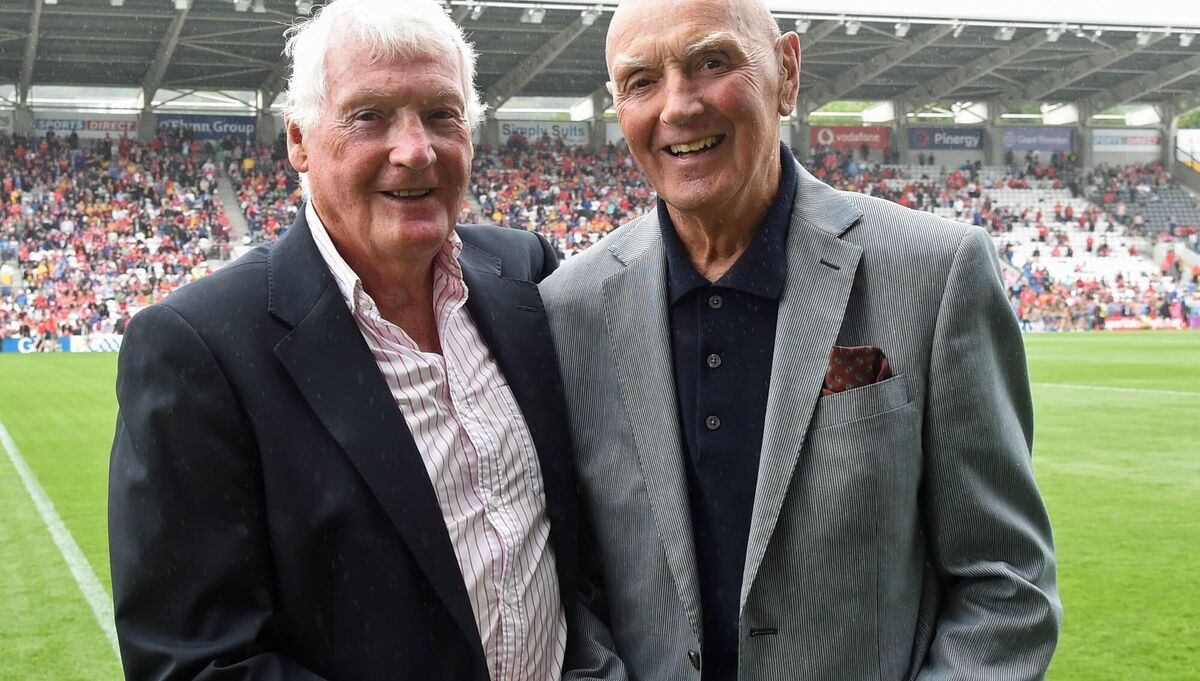
The northside’s demise, Coughlan continues, might not be exclusive to its constituent parishes.
As a domino effect to northside representation disappearing from the top table on the club front, Coughlan fears northside representation on Cork teams could now also suffer and fall.
“I think that will manifest itself on Cork teams. To be playing at inter-county level, you need to be playing with a strong club who play at the top level of hurling and football in Cork.”
Na Piarsaigh’s failure to even emerge from their Senior A group in recent weeks serves as an early warning to the Glen that they won’t get it straightforward in attempting to quickly restore their top-flight status.
Coughlan, who won five counties, three Munsters, and two club All-Irelands during his Glen days, is hopeful they will bounce back from relegation.
“The Barrs were very close to relegation around 10 years ago. Blackrock were within two points of being relegated a couple of years before that. We haven't a divine right to remain a senior club all our lives.
“The Glen, in fairness to them, they tried everything to stay up. They were just outplayed.
“I was at the Premier Junior quarter-final win on Sunday, it was a wonderful game. So long as there are good people involved, clubs like Glen Rovers will come back again.”



